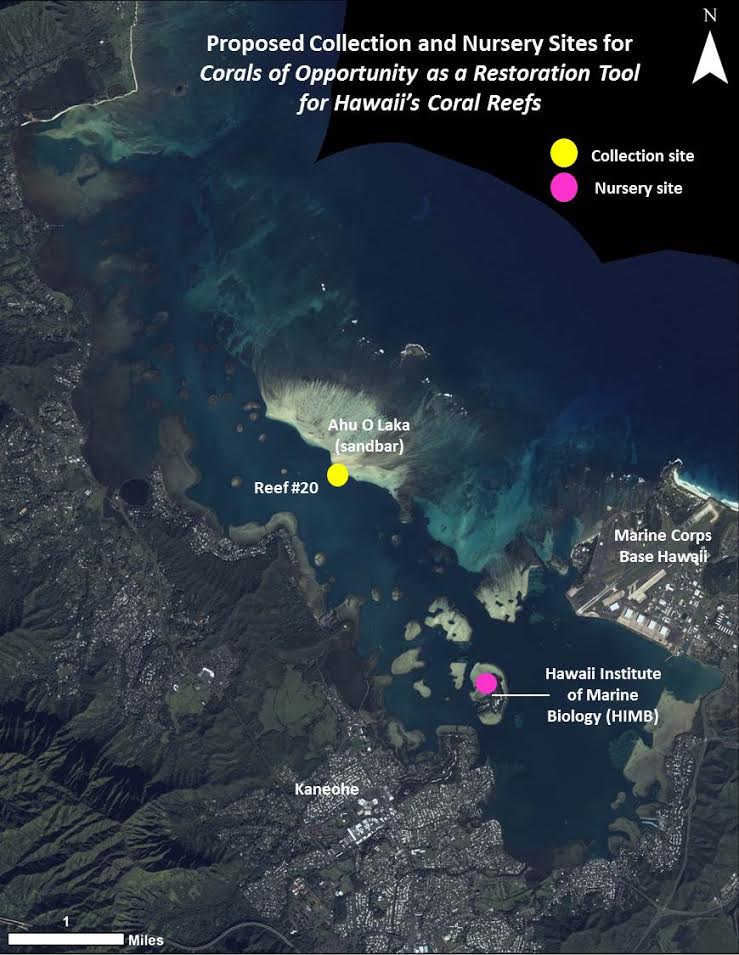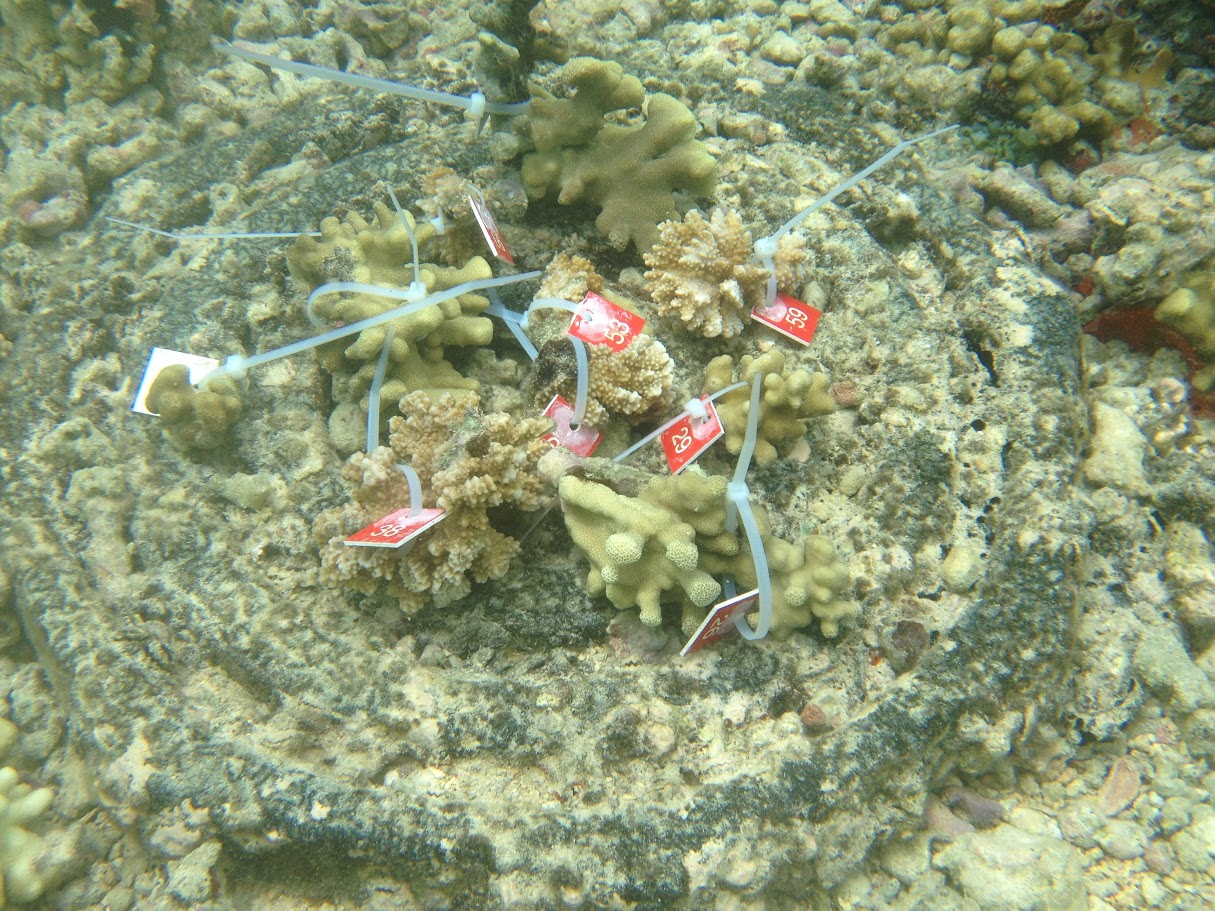- ABOUT US
- PROGRAM AREAS
- CONSERVATION APPROACH
- EDUCATION
- MULTIMEDIA
Using Corals of Opportunity for a Nursery in Hawaii
By Sable Liggera, Communications Intern
Scientists and managers in Hawaii work together to establish a small-scale, two year coral nursery pilot program.
Hawaii's coral reefs are renowned for their breathtaking beauty. Furthermore, not only do they play a large role in Hawaii's economy, they also help regulate natural biological processes in Hawaii's marine environment and beyond. However, many of the endemic species on Hawaii's reefs are relatively slow growing. This fact can often complicate recovery efforts following a disturbance.
In support of recovery efforts, Hawaii's Division of Aquatic Resources recently established a small-scale pilot coral nursery project on the east coast of Oahu in Kaneohe Bay. The project aims to determine the effectiveness of in situ, or "in-the-field" nurseries, in promoting coral recovery.

The program takes advantage of corals of opportunity — coral fragments dislodged from their parent reefs because of man-made activities, such as frequent boat groundings near coral reefs. After collecting such coral fragments, scientists attach the pieces to designated nursery pilot sites. In order to determine the effectiveness of in situ nurseries, some fragments were either reattached to parent reefs or left free to act as control groups, while others were attached to six test locations at the Hawaii Institute of Marine Biology.

These efforts are a departure from existing ex situ nurseries, where corals are grown in "out-of-the-field" settings, such as laboratories, where the environment can be artificially manipulated into settings ideal for quick growth. Both approaches, however, are being tested and offer unique advantages.
For example, while coral may grow faster under ex situ laboratory conditions, maintaining coral nurseries in more natural settings has its own unique benefits. As maintaining an ideal laboratory environment is energy intensive, the more natural setting proposed by the pilot program is cheaper and easier to establish. In addition, naturally grown coral may have a higher chance of survival when transplanted back into the wild.

Partners in this effort include, Hawaii's Division of Aquatic Resources, the University of Hawaii, the Hawaii Institute of Marine Biology and NOAA's Coral Reef Conservation Program.
About Us

The NOAA Coral Reef Conservation Program was established in 2000 by the Coral Reef Conservation Act. Headquartered in Silver Spring, Maryland, the program is part of NOAA's Office for Coastal Management.

The Coral Reef Information System (CoRIS) is the program's information portal that provides access to NOAA coral reef data and products.
Work With US
U.S. Coral Reef Task Force
Funding Opportunities
Employment
Fellowship Program
Contracting Assistance
Graphic Identifier
Featured Stories Archive

Access the archive of featured stories here...
Feedback
Thank you for visiting NOAA’s Coral Reef Conservation Program online. Please take our website satisfaction survey. We welcome your ideas, comments, and feedback. Questions? Email coralreef@noaa.gov.
Stay Connected
Contact Us
NOAA’s Coral Reef Conservation Program
SSMC4, 10th Floor
1305 East West Highway
Silver Spring, MD 20910
coralreef@noaa.gov
